Ch. 3: Focus on Pharmacotherapy
This chapter explores the potential for medications to assist in the treatment of substance misuse and substance use disorders. Two general terms or labels are applied to this kind of intervention strategy: pharmacotherapy and medication assisted treatment (MAT). Four basic purposes underlie pharmacotherapy and MAT interventions for substance misuse and substance used disorder:
- Manage detoxification (detox) and stabilization processes as the first step in recovery;
- Reduce substance cravings to prevent relapse and support recovery;
- Manage short- and long-term withdrawal symptoms to prevent relapse and support recovery;
- Help improve physical and/or mental health status related to co-occurring conditions.
The first step emphasizes that any necessary detoxification and stabilization be established before longer-term recovery support or treatment is delivered (CSAT, 2006).
As you read this chapter, consider several things:
- First, on the surface, it might seem a bit paradoxical to treat a drug problem with drugs. The pharmacotherapy strategy is not without controversy. Underlying some programs is a philosophy encouraging total abstinence from all types of psychoactive substances, including relying on the medications prescribed in pharmacotherapy—not substituting one drug for another, but eliminating the need for any drugs. However, there exists a sizable (and growing) literature supporting the use of certain medications to facilitate treatment of substance use disorders.
“Pharmacotherapies, or prescribed use of medications, have increasingly become an important component in managing the care of individuals experiencing substance use problems” (Zweben & West, 2020, p. 310).
 The underlying assumption is that substance use disorders and addiction are diseases of the brain and brain chemistry, therefore addressing those brain chemistry mechanisms is a reasonable approach to treatment. Furthermore, pharmacotherapy is intended as a means of supporting the transition from substance misuse to substance abstinence through medication assistance the helps individuals overcome cravings and withdrawal (short- and long-term). Individuals who have been self-medicating physical and/or mental disorders can be supported with alternatives to the drugs that were causing so much harm in their lives.
The underlying assumption is that substance use disorders and addiction are diseases of the brain and brain chemistry, therefore addressing those brain chemistry mechanisms is a reasonable approach to treatment. Furthermore, pharmacotherapy is intended as a means of supporting the transition from substance misuse to substance abstinence through medication assistance the helps individuals overcome cravings and withdrawal (short- and long-term). Individuals who have been self-medicating physical and/or mental disorders can be supported with alternatives to the drugs that were causing so much harm in their lives.
- Second, a preponderance of evidence supports providing psychological, social, and biological approaches in combination—medications alone are not sufficient but can make a difference in a person’s ability to stick with and benefit from behavioral and social interventions.
“Pharmacotherapy should be accompanied by behavioral intervention to clarify and set expectations of the benefits, side effects management, and potential barriers to compliance with the medication protocol” (medication management counseling) and provide the kind of behavioral, social, and case management interventions necessary to support the recovery process (Zweben & West, 2020, p. 311).
“Lacking the requisite social support and social stability to sustain treatment gains increases the risk of treatment failure. Adequate exposure to a more intensive behavioral approach is often necessary to attend to treatment needs” (Zweben & West, 2020, p. 312).
“In summary, pharmacotherapy may help reduce withdrawal symptoms and craving during recovery, but behavioral interventions are needed to resolve accompanying or associated social, economic, interpersonal, and intrapersonal problems. Not attending to these issues can present a major impediment to recovery” (Zweben & West, 2020, p. 312).
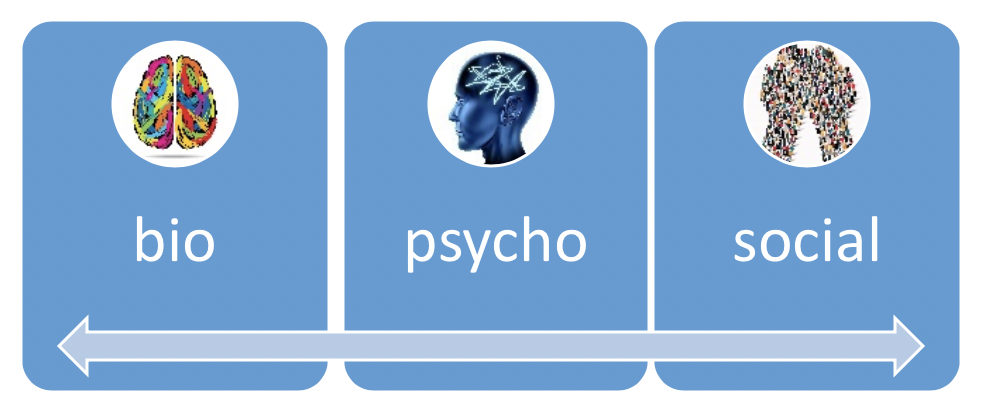
This is the theme of the guidelines published by the Substance Abuse and Mental Health Services Administration (SAMHSA, 2016) for medication assisted treatment of opioid addiction. These guidelines indicate that the following steps are critical:
✔️ Evaluate the need for medically managed withdrawal from opioids
✔️ Addressing co-occurring problems (more about this our final course module)
✔️Integrate pharmacologic and nonpharmacologic therapies—medications are a part of a comprehensive, individualized treatment plan that includes counseling and other psychosocial therapies and mutual-help programs.
- Third, medications used to treat substance use disorders are not without side effects and risks themselves: some pharmacotherapy medications have addictive potential themselves (e.g., methadone). The hope is that their known risks can be managed more safely than in the uncontrolled world of illicit substance misuse. In other words, use of managed, monitored, medication assisted treatment is a form of harm reduction strategy.
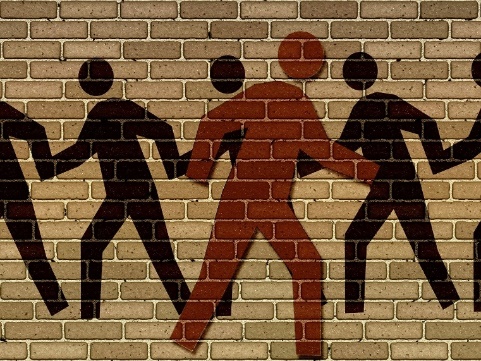 In short, keep in mind that MAT or pharmacotherapy is a tool in the collection of options available for the treatment of substance use disorders. The science surrounding the development and testing of new medication applications changes rapidly, so new medications may come into favor just as older and current medications may decline in favor as treatment approaches (Portelli, Munja, & Leggio, 2020). As we have learned throughout this course, no one-size-fits-all approach works for everyone. Like any treatment program, pharmacotherapy/MAT needs to be tailored to individuals and their circumstances, and often need to be modified as a person’s circumstances change over time. Furthermore, many individuals engaged in polydrug use or experiencing co-occurring problems may need individualized medication regimens as different medications used in pharmacotherapy/MAT have differing effects, differing effectiveness for addressing misuse of different substances, and interact differently with conditions and other medications (Portelli, Munja, & Leggio, 2020).
In short, keep in mind that MAT or pharmacotherapy is a tool in the collection of options available for the treatment of substance use disorders. The science surrounding the development and testing of new medication applications changes rapidly, so new medications may come into favor just as older and current medications may decline in favor as treatment approaches (Portelli, Munja, & Leggio, 2020). As we have learned throughout this course, no one-size-fits-all approach works for everyone. Like any treatment program, pharmacotherapy/MAT needs to be tailored to individuals and their circumstances, and often need to be modified as a person’s circumstances change over time. Furthermore, many individuals engaged in polydrug use or experiencing co-occurring problems may need individualized medication regimens as different medications used in pharmacotherapy/MAT have differing effects, differing effectiveness for addressing misuse of different substances, and interact differently with conditions and other medications (Portelli, Munja, & Leggio, 2020).
“Individuals experiencing more severe substance use problems typically require more intensive behavioral interventions in conjunction with an effective medication” (Zweben & West, 2020, p. 312).
“In contrast, for individuals experiencing less severe substance-related problems, a less intensive medical management (MM) approach, combined with an effective medication might suffice to produce positive change” (Zweben & West, 2020, p. 312).
Medication Assisted Detoxification/Stabilization and Management of Cravings and Withdrawal (Relapse Prevention)
Detoxification (detox) is part of the continuum of care in addressing a person’s substance misuse or substance use disorder and may involve an interdisciplinary team. A great deal of managing neonatal withdrawal syndrome (NWS) involves detoxification and stabilization of the infant, as well as potentially addressing substance-related concerns with parent(s)—sometimes the mother’s use of opioids is medically managed throughout a pregnancy, it is not always a matter of substance misuse.
According to TIP #45 (CSAT, 2006):
“Detoxification is a set of interventions aimed at managing acute intoxication and withdrawal. It denotes a clearing of toxins from the body of a patient who is acutely intoxicated and/or dependent on substances of abuse. Detoxification seeks to minimize the physical harm caused by the abuse of substances” (p. 4).
The TIP #45 resource also explains that the detoxification process is comprised of 3 essential components:
- Evaluation (e.g., person’s physical and mental status, types and amounts of substances involved)
- Stabilization (establish safe physical and mental status)
- Fostering readiness for engaging in treatment.
 Pharmacotherapy and MAT might assist in the detox and stabilization processes: “This often is done with the assistance of medications” (CSAT, 2006, p. 4). Medically supervised detoxification is an important means of managing potentially life-threatening withdrawal and other physical (or suicidality) concerns that may arise during this early step in recovery. The length of time required to complete detoxification and stabilization varies as a function of the drugs and doses involved, as the persistence of different substances being metabolized varies markedly. Detox and stabilization are not considered a completed substance misuse treatment episode but an important component that also provides a person with:
Pharmacotherapy and MAT might assist in the detox and stabilization processes: “This often is done with the assistance of medications” (CSAT, 2006, p. 4). Medically supervised detoxification is an important means of managing potentially life-threatening withdrawal and other physical (or suicidality) concerns that may arise during this early step in recovery. The length of time required to complete detoxification and stabilization varies as a function of the drugs and doses involved, as the persistence of different substances being metabolized varies markedly. Detox and stabilization are not considered a completed substance misuse treatment episode but an important component that also provides a person with:
“a point of first contact with the treatment system and the first step to recovery. Treatment/rehabilitation, on the other hand, involves a constellation of ongoing therapeutic services ultimately intended to promote recovery” (CSAT, 2006, p. 4).
A detox/stabilization program may consist of specific stages or phases with different aims at each point in the process (CSAT, 2006). The initial goal is to monitor any acute medical situation or crisis, ensuring safety as the misused substances leave the body (withdrawal). Administering medications to support the person medically could take place during this phase, but only if the stabilization team knows what substances were involved—a polydrug misuse crisis might leave the team unwilling to risk administering medications that might adversely interact with some of the potentially involved substances.
 The second phase of stabilization involves a more extended detoxification treatment plan (measured in days) to manage the early withdrawal period and to support the person in obtaining ongoing treatment for their substance misuse/substance use disorder. This might involve a medication assisted treatment (MAT) plan. The third phase of a stabilization plan might continue for days to weeks with the goal of supporting the person in making a successful transition to long-term treatment, often involving counseling, supportive recovery services (e.g., sober housing and other case management services), and MAT.
The second phase of stabilization involves a more extended detoxification treatment plan (measured in days) to manage the early withdrawal period and to support the person in obtaining ongoing treatment for their substance misuse/substance use disorder. This might involve a medication assisted treatment (MAT) plan. The third phase of a stabilization plan might continue for days to weeks with the goal of supporting the person in making a successful transition to long-term treatment, often involving counseling, supportive recovery services (e.g., sober housing and other case management services), and MAT.
Let’s take a closer look at some of the current Food and Drug Administration (FDA) approved options used in detox and longer-term treatment interventions. First, a little reminder of some pharmacotherapy principles relevant to pharmacotherapy and MAT. The distinction between agonist and antagonist medications is relevant to pharmacotherapy intervention strategies. You may recall from earlier coursework that an agonist leads to activation or stimulation of neurons when it binds to the specific receptor sites, and an antagonist blocks (or dampens) the neurons’ responses when it binds to the specific receptor sites (Portelli, Munja, & Leggio, 2020). This information helps determine which medications are most likely to produce the desired effect in treating misuse of a specific type of substance. Recall also that different drugs even within the same class have different rates at which they are absorbed and metabolized, and dosing is dependent on finding the medication’s therapeutic zone without moving into an overdose level where side effects outweigh the benefits. Recall also that a person may develop physical dependence on some pharmacotherapy/MAT medications, just as they did to the misused substances, that tolerance to some pharmacotherapy agents may develop, and that withdrawal from some of these medications may be unpleasant. Critical in all of this discussion is medication management (MM)—ensuring that a person has access to the medications prescribed, is able to and does use them as prescribed, and is able to tolerate the side effects (e.g., see Medication Management Support for Alcohol Dependence, https://pubs.niaaa.nih.gov/publications/clinicianGuide/guide/tutorial/data/resources/MedMgmtSupportTemplates.pdf).
Common Pharmacotherapy/MAT Agents
Several pharmacotherapy and MAT agents common in the U.S. are described and discussed in terms of the types of substance misuse/use disorder they are intended to treat.
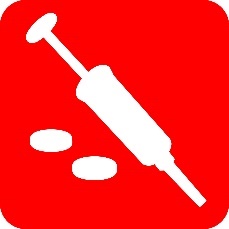 Alcoho Use Disorder. You may recall from our unit focused on alcohol that withdrawal from alcohol can be a complicated, and potentially deadly, process best managed with close medical supervision and management (CSAT, 2006). While the majority of individuals will not need medication to manage the stabilization process following alcohol intoxication, medications might be helpful for the others (CSAT, 2006). Benzodiazepine has a significant history as a first step in treating alcohol withdrawal (Zweben & West, 2020), but benzodiazepine treatment also introduces significant risks of its own (CSAT, 2006). Three medications used in longer-term treatment of alcohol misuse/use disorder and relapse prevention are not particularly addictive themselves and are otherwise reasonably safe to use: naltrexone, acamprosate, and disulfiram (Portelli, Munja, & Leggio, 2020). Naltrexone was approved by the FDA in 1994 for treatment of alcohol use disorder (Suh, Pettinati, Kampman, & O’Brien, 2006). Naltrexone is an opioid receptor antagonist that decreases the positive reinforcing effects of alcohol use, thereby gradually reducing a person’s craving for alcohol as the reward is not as strongly “paired” with the behavior (Suh et al., 2006). Adherence with naltrexone therapy is bolstered by using a long-acting, extended-release injectable form (e.g. Vivitrol®) instead of a daily oral dosing protocol (Portelli, Munjal, & Leggio, 2020).
Alcoho Use Disorder. You may recall from our unit focused on alcohol that withdrawal from alcohol can be a complicated, and potentially deadly, process best managed with close medical supervision and management (CSAT, 2006). While the majority of individuals will not need medication to manage the stabilization process following alcohol intoxication, medications might be helpful for the others (CSAT, 2006). Benzodiazepine has a significant history as a first step in treating alcohol withdrawal (Zweben & West, 2020), but benzodiazepine treatment also introduces significant risks of its own (CSAT, 2006). Three medications used in longer-term treatment of alcohol misuse/use disorder and relapse prevention are not particularly addictive themselves and are otherwise reasonably safe to use: naltrexone, acamprosate, and disulfiram (Portelli, Munja, & Leggio, 2020). Naltrexone was approved by the FDA in 1994 for treatment of alcohol use disorder (Suh, Pettinati, Kampman, & O’Brien, 2006). Naltrexone is an opioid receptor antagonist that decreases the positive reinforcing effects of alcohol use, thereby gradually reducing a person’s craving for alcohol as the reward is not as strongly “paired” with the behavior (Suh et al., 2006). Adherence with naltrexone therapy is bolstered by using a long-acting, extended-release injectable form (e.g. Vivitrol®) instead of a daily oral dosing protocol (Portelli, Munjal, & Leggio, 2020).
Acamprosate became an FDA-approved alcohol use disorder treatment medication in 2004 (Suh et al., 2006). It works at the neurotransmitter level, reducing the longer-term negative withdrawal effects of quitting alcohol use—effects associated with relapse, making it easier to stick with a recovery commitment. One of the benefits of acamprosate over some other medications: it is not metabolized by the liver which is important in persons whose liver may be compromised from chronic alcohol misuse or who might have hepatitis or other liver disease (Witkiewitz, Saville, & Hamreaus, 2012). It is also a safely tolerated alternative for a person whose treatment goal is to reduce their drinking but not eliminate all alcohol use (Witkiewitz, Saville, & Hamreaus, 2012).
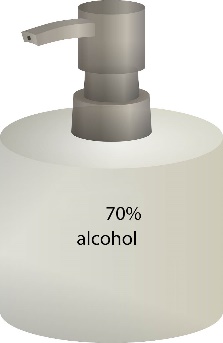 In 1951, disulfiram (Antabuse®) was approved by the FDA for use in treating alcohol use disorder (Suh et al., 2006). This drug works differently from the previous two: it creates a set of acute physical discomforts when alcohol is consumed in its presence. In learning theory terms, drinking behavior is punished by the physical consequences experienced. It does this by inhibiting the enzyme (ALDH, aldehyde dehydrogenase) responsible for metabolizing the first-order alcohol metabolite, acetaldehyde, thus allowing the acetaldehyde to build up to levels where facial flushing, sweating, headache, nausea/vomiting, rapid and/or irregular heart rate occur soon after drinking alcohol (Suh et al., 2006). Pharmacotherapy with disulfiram for treating alcohol use disorder can be somewhat tricky and complicated. For example, the individual needs to be sufficiently motivated for change and have reliable access to the medication in order to take the medication as prescribed (medication adherence); skipping doses means they can drink again without the immediately punishing consequences. Dosing is also an issue, as the aim is to cause mild discomfort rather than significant symptoms when alcohol is consumed, but these consequences are alcohol dose dependent (Suh et al., 2006). The unpleasant reaction may even be triggered by exposure to alcohol in other forms, such as: alcohol-based hand sanitizer, mouthwash, cleaner, or solvent; cooking wine or wine-based vinegar; flamed/flambé desserts using alcohol as the fuel; and more. Like any medication, it is not without side effects, but these are generally considered mild (Suh et al., 2006).
In 1951, disulfiram (Antabuse®) was approved by the FDA for use in treating alcohol use disorder (Suh et al., 2006). This drug works differently from the previous two: it creates a set of acute physical discomforts when alcohol is consumed in its presence. In learning theory terms, drinking behavior is punished by the physical consequences experienced. It does this by inhibiting the enzyme (ALDH, aldehyde dehydrogenase) responsible for metabolizing the first-order alcohol metabolite, acetaldehyde, thus allowing the acetaldehyde to build up to levels where facial flushing, sweating, headache, nausea/vomiting, rapid and/or irregular heart rate occur soon after drinking alcohol (Suh et al., 2006). Pharmacotherapy with disulfiram for treating alcohol use disorder can be somewhat tricky and complicated. For example, the individual needs to be sufficiently motivated for change and have reliable access to the medication in order to take the medication as prescribed (medication adherence); skipping doses means they can drink again without the immediately punishing consequences. Dosing is also an issue, as the aim is to cause mild discomfort rather than significant symptoms when alcohol is consumed, but these consequences are alcohol dose dependent (Suh et al., 2006). The unpleasant reaction may even be triggered by exposure to alcohol in other forms, such as: alcohol-based hand sanitizer, mouthwash, cleaner, or solvent; cooking wine or wine-based vinegar; flamed/flambé desserts using alcohol as the fuel; and more. Like any medication, it is not without side effects, but these are generally considered mild (Suh et al., 2006).
Other pharmacotherapy approaches to alcohol use disorder either in other countries or under study in the United States include:
- nalmefene, used in Europe for this purpose, has moderate evidentiary support;
- baclofen, which has mixed results in studies from several countries;
- varenicline, used to support smoking cessation, has some efficacy support especially for individuals experiencing both alcohol and nicotine use disorder;
- and others under early investigation (Portelli, Munjal, & Leggio, 2020).
Sedative-Hypnotic/CNS Depressant Use Disorder. As in the case of alcohol withdrawal, the process can be complicated and potentially deadly, therefore the process may best be managed with close medical supervision and management (CSAT, 2006). The pharmacotherapy medication of choice has been benzodiazepine—a sedative-hypnotic CNS depressant we previously studied and discussed in relation to alcohol use disorder. This intervention approach is based on transitioning from the effects of one CNS depressant (e.g. alcohol or other CNS depressant) to another (benzodiazepine), then imposing a more controlled physical withdrawal process through gradual tapering of the second CNS depressant (the benzodiazepine; CSAT, 2006).
Cannabis Use Disorder. “There are currently no FDA-approved pharmacotherapy treatments for cannabis use disorders” (Portelli, Munjal, & Leggio, 2020, p. 336). Symptoms of cannabis withdrawal may be managed with medications.
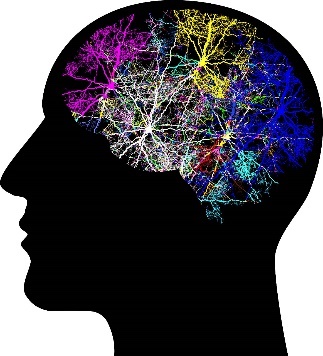 Cocaine Use Disorder. Individuals helped with severe cocaine (or other stimulant) withdrawal may engage in less future cocaine use when their detox was supported with a medication called amantadine, but this medication did not improve outcomes for individuals with less severe withdrawal symptoms (CSAT, 2006). Disulfiram has been used to address cocaine use disorder, as well as alcohol use disorder; this is relevant because the two problems often co-occur (Suh et al., 2006). The mechanism by which disulfiram it believed to have its effect on cocaine relapse is different than how it worked against alcohol misuse: it seems to act similarly to an agonist in the dopamine system of the brain (Suh et al., 2006). However, efficacy of disulfiram treatment for cocaine use disorder is debatable (Portelli, Munjal, & Leggio, 2020). Systematic review of literature concerning the use of antidepressant medications to treat primary cocaine use disorder concluded that they “appear to have no effect on cocaine use or treatment retention” (Chan et al., 2019). Buproprion, topiramate, and psychostimulants have some evidence of effectiveness on cocaine abstinence, and antipsychotic medications have moderate evidence of effectiveness in improving treatment retention (Chan et al., 2019).
Cocaine Use Disorder. Individuals helped with severe cocaine (or other stimulant) withdrawal may engage in less future cocaine use when their detox was supported with a medication called amantadine, but this medication did not improve outcomes for individuals with less severe withdrawal symptoms (CSAT, 2006). Disulfiram has been used to address cocaine use disorder, as well as alcohol use disorder; this is relevant because the two problems often co-occur (Suh et al., 2006). The mechanism by which disulfiram it believed to have its effect on cocaine relapse is different than how it worked against alcohol misuse: it seems to act similarly to an agonist in the dopamine system of the brain (Suh et al., 2006). However, efficacy of disulfiram treatment for cocaine use disorder is debatable (Portelli, Munjal, & Leggio, 2020). Systematic review of literature concerning the use of antidepressant medications to treat primary cocaine use disorder concluded that they “appear to have no effect on cocaine use or treatment retention” (Chan et al., 2019). Buproprion, topiramate, and psychostimulants have some evidence of effectiveness on cocaine abstinence, and antipsychotic medications have moderate evidence of effectiveness in improving treatment retention (Chan et al., 2019).
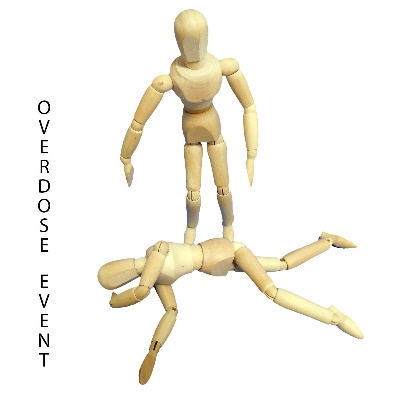 Opioid Use Disorder. As in the case of alcohol and sedative hypnotic withdrawal, the process can be complicated and potentially deadly, therefore the process is best managed with close medical supervision and management (CSAT, 2006). Opioid receptor antagonists are important in the immediate reversal of opioid overdose—naloxone (Narcan® or Evzio®) being the one with which the public is most familiar. As an antagonist, naloxone binds to opioid receptors and blocks the effects of other opioids—heroin, fentanyl, and opiate medications. It is either injected or sprayed into a nostril of a person undergoing (or suspected of) opioid overdose (NIDA, 2020). Naloxone delivery induces immediate opioid withdrawal, so the person will likely experience withdrawal symptoms—this consequence is offset by the lifesaving effects on suppressed breathing. More than one dose might be necessary, depending on the intensity and dose of the opioid that was used in the overdose situation (e.g., fentanyl overdose may require multiple administrations for reversal). In most communities, naloxone can be legally carried and administered by any community member or family member/friend of anyone at risk of opioid overdose; some states require physician prescription, while in other pharmacies can distribute naloxone delivery kits without a prescription. To learn about naloxone access laws in different states, see the Prescription Drug Abuse Policy System website (http://www.pdaps.org/datasets/laws-regulating-administration-of-naloxone-1501695139). In addition to use for opioid overdose reversal, naloxone appears in combination with other MAT medications in longer-term pharmacotherapy for opioid use disorder—these formulations allow the different medication combined to offset each other’s negative effects leading to greater recovery support potential (Portelli, Munjal, & Leggio, 2020).
Opioid Use Disorder. As in the case of alcohol and sedative hypnotic withdrawal, the process can be complicated and potentially deadly, therefore the process is best managed with close medical supervision and management (CSAT, 2006). Opioid receptor antagonists are important in the immediate reversal of opioid overdose—naloxone (Narcan® or Evzio®) being the one with which the public is most familiar. As an antagonist, naloxone binds to opioid receptors and blocks the effects of other opioids—heroin, fentanyl, and opiate medications. It is either injected or sprayed into a nostril of a person undergoing (or suspected of) opioid overdose (NIDA, 2020). Naloxone delivery induces immediate opioid withdrawal, so the person will likely experience withdrawal symptoms—this consequence is offset by the lifesaving effects on suppressed breathing. More than one dose might be necessary, depending on the intensity and dose of the opioid that was used in the overdose situation (e.g., fentanyl overdose may require multiple administrations for reversal). In most communities, naloxone can be legally carried and administered by any community member or family member/friend of anyone at risk of opioid overdose; some states require physician prescription, while in other pharmacies can distribute naloxone delivery kits without a prescription. To learn about naloxone access laws in different states, see the Prescription Drug Abuse Policy System website (http://www.pdaps.org/datasets/laws-regulating-administration-of-naloxone-1501695139). In addition to use for opioid overdose reversal, naloxone appears in combination with other MAT medications in longer-term pharmacotherapy for opioid use disorder—these formulations allow the different medication combined to offset each other’s negative effects leading to greater recovery support potential (Portelli, Munjal, & Leggio, 2020).
 Naltrexone, previously discussed in the pharmacotherapy for alcohol misuse/use disorder, is also used in MAT for opioid use disorder. Naltrexone is an opioid antagonist that blocks the euphoric and sedating effects of opioids, and reduces opioid craving (SAMHSA, 2019). If a person taking naltrexone relapses to opioid use, the reinforcing effect of the substance misuse is blocked. One challenge with MAT involving naltrexone is that a person will need to be free of opioid use for at least 7-10 days before staring naltrexone therapy because the medication will induce opioid withdrawal symptoms (SAMHSA, 2019). Of concern is the high relapse rate occurring before this point of detox: “…abstaining for weeks or months before entry will fail most of the population, who relapse before that point” (Humphreys, Malenka, Knutxon, & MacCoun, 2017). Another challenge arises if a person stops taking the medication: their previous opioid tolerance level may have dropped so resuming use of the same amount/dose of opioids previously misused may cause a dangerous overdose event (SAMHSA, 2019). An advantage of naltrexone therapy is that it is available in an extended-release monthly injectable form (Vivitrol®) which helps a person maintain medication compliance over time. Also, because the injections are delivered by health care providers, the individual’s status can be monitored, and additional treatments/services can be offered as needed.
Naltrexone, previously discussed in the pharmacotherapy for alcohol misuse/use disorder, is also used in MAT for opioid use disorder. Naltrexone is an opioid antagonist that blocks the euphoric and sedating effects of opioids, and reduces opioid craving (SAMHSA, 2019). If a person taking naltrexone relapses to opioid use, the reinforcing effect of the substance misuse is blocked. One challenge with MAT involving naltrexone is that a person will need to be free of opioid use for at least 7-10 days before staring naltrexone therapy because the medication will induce opioid withdrawal symptoms (SAMHSA, 2019). Of concern is the high relapse rate occurring before this point of detox: “…abstaining for weeks or months before entry will fail most of the population, who relapse before that point” (Humphreys, Malenka, Knutxon, & MacCoun, 2017). Another challenge arises if a person stops taking the medication: their previous opioid tolerance level may have dropped so resuming use of the same amount/dose of opioids previously misused may cause a dangerous overdose event (SAMHSA, 2019). An advantage of naltrexone therapy is that it is available in an extended-release monthly injectable form (Vivitrol®) which helps a person maintain medication compliance over time. Also, because the injections are delivered by health care providers, the individual’s status can be monitored, and additional treatments/services can be offered as needed.
Methadone is a relatively long-acting opiate, synthetically produced, and the pharmacotherapy approach to opioid use disorder with the longest evidence-supported history (Portelli, Munjal, & Leggio, 2020). The pharmacological effects are similar to opioids commonly misused, allowing prescribers to help a person gradually withdraw and taper off of other opioids. It reduces the experience of withdrawal so that a person is less likely to relapse with the aim of avoiding these miserable symptoms. Methadone maintenance therapy (MMT), the primary form of MAT for opioid use disorder, is delivered by specially licensed clinics and integrates methadone pharmacotherapy with behavioral and other intervention strategies with better outcomes than either methadone detoxification or non-methadone involved strategies alone (Mattick, Breen, Kimber, & Davoli, 2009; Portelli, Munjal, & Leggio, 2020). As long as a person continues to engage in MMT, their progress and health concerns can be monitored and potentially addressed on a regular basis by the clinic team. “In addition to maintaining abstinence, methadone treatment has been shown to reduce overdose death risk, increase treatment retention, and reduce use of illicit drugs” compared to placebo medication (Portelli, Munjal, & Leggio (2020). Tight control over methadone therapy is required because of its high potential for abuse—it is an addictive substance itself, listed as a Schedule II substance. Unfortunately, the necessity for such tight control reduces ease-of-access to this type of treatment.
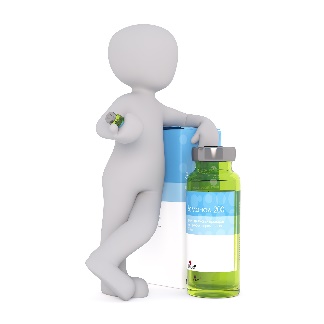
In addition to naltrexone and methadone, the FDA has approved buprenorphine for the treatment of opioid use disorder. Buprenorphine (Subutex®), nicknamed bupe, is a long-acting (partial) agonist acting on opioid receptor sites—it does not produce the same euphoric or dangerous effects as commonly misused opioids (NIDA, n.d.). Buprenorphine may also be prescribed to manage chronic pain (Portelli, Munjal, & Leggio, 2020). Suboxone® is a medication combining buprenorphine and naloxone which reduces “diversion” for misuse of the buprenorphine alone (NIDA, n.d.). Buprenorphine has a lower risk of substance misuse compared to methadone which has allowed a larger range of qualified health care providers to legally prescribe this medication (since the Drug Addiction Treatment Act of 2000). However, requiring specialized training to become a qualified buprenorphine prescriber does impose a barrier to wider use (Portelli, Munjal, & Leggio, 2020). An opioid use abstinence period of 12-24 hours is recommended prior to beginning buprenorphine treatment (Portelli, Munjal, & Leggio, 2020).
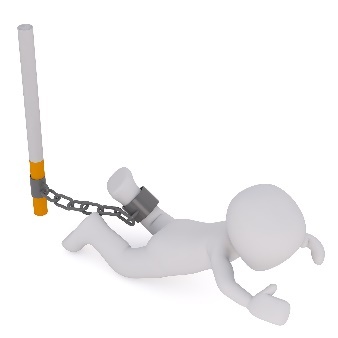 Nicotine Addiction. Tobacco use disorder has greater chances for successful treatment when pharmacotherapy and behavioral therapies are delivered in combination (Portelli, Munjal, & Leggio, 2020). Among the pharmacotherapy strategies are nicotine replacement therapy (NRT) and medications that influence neurotransmitter systems. NRT options include various forms of administering controlled doses of nicotine (the most addictive of the chemicals in tobacco use: transdermal (skin) patches, gum, lozenges, oral/nasal spray, or inhaler (e.g, vaping). “There exists robust evidence of the efficacy of NRTs in aiding smoking cessation” (Portelli, Munjal, & Leggio, 2020, p. 327). Bupropion (e.g., Zyban®) acts on nicotine withdrawal effects, making it easier to avoid relapse. Varenicline (e.g. Chantix®) acts by mildly stimulating the same receptor sites activated by nicotine and, at the same time, blocks nicotine’s dopamine releasing capabilities—in other words, it is both an agonist and antagonist medication. Thus, it provides some of the reinforcement previously gained with smoking cigarettes and decreases the reinforcement received from smoking again. Evidence supporting e-cigarettes/vaping as an NRT is mixed: evidence suggests that individuals can effectively use this method to taper off of cigarette smoking, however it is all too common that they simply replace smoking cigarettes with continued e-cigarette use and fail to taper off the nicotine and remain addicted (Portelli, Munjal, & Leggio, 2020). As previously discussed, there exist significant health and safety concerns related to e-cigarette use.
Nicotine Addiction. Tobacco use disorder has greater chances for successful treatment when pharmacotherapy and behavioral therapies are delivered in combination (Portelli, Munjal, & Leggio, 2020). Among the pharmacotherapy strategies are nicotine replacement therapy (NRT) and medications that influence neurotransmitter systems. NRT options include various forms of administering controlled doses of nicotine (the most addictive of the chemicals in tobacco use: transdermal (skin) patches, gum, lozenges, oral/nasal spray, or inhaler (e.g, vaping). “There exists robust evidence of the efficacy of NRTs in aiding smoking cessation” (Portelli, Munjal, & Leggio, 2020, p. 327). Bupropion (e.g., Zyban®) acts on nicotine withdrawal effects, making it easier to avoid relapse. Varenicline (e.g. Chantix®) acts by mildly stimulating the same receptor sites activated by nicotine and, at the same time, blocks nicotine’s dopamine releasing capabilities—in other words, it is both an agonist and antagonist medication. Thus, it provides some of the reinforcement previously gained with smoking cigarettes and decreases the reinforcement received from smoking again. Evidence supporting e-cigarettes/vaping as an NRT is mixed: evidence suggests that individuals can effectively use this method to taper off of cigarette smoking, however it is all too common that they simply replace smoking cigarettes with continued e-cigarette use and fail to taper off the nicotine and remain addicted (Portelli, Munjal, & Leggio, 2020). As previously discussed, there exist significant health and safety concerns related to e-cigarette use.

